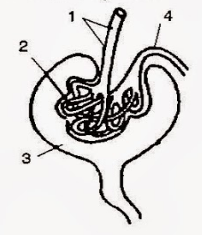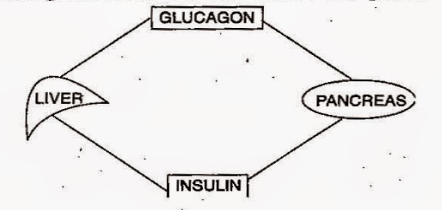 Short Answer Type
Short Answer TypeWith reference to the human ear, answer the following questions:
(iii) Name the part of the ear associated with (1) static balance, (2) hearing and (3)
dynamic balance.
With reference to the human ear, answer the following questions:
(iv)Name the nerve which transmits messages from the ear to the brain.
Name an accessory gland found in the male reproductive system and state the function of its secretion.
Write the difference between the following pairs by following the indications in the brackets:
(i) Antiseptic and disinfectant (an example for each)
Write the difference between the following pairs by following the indications in the
brackets:
(ii) Erythrocytes and leucocytes (function)
Write the difference between the following pairs by following the indications in the
brackets:
(iii)Guttation and bleeding in plants (cause)
Write the difference between the following pairs by following the indications in the
brackets:
(iv)NADP and AIDS (expand the abbreviation)
Write the difference between the following pairs by following the indications in the
brackets:
Monohybrid and dihybrid cross (phenotypic ratio)
 Long Answer Type
Long Answer TypeStudy the diagram given below and answer the following questions: 
(i) Name the region in the kidney where this structure is present
(ii) Name the parts labelled 1, 2, 3 and 4.
(iii) Name the stages involved in the formation of urine.
(iv)What is the technical term given to the process occurring in 2 and 3? Briefly describe the process.
Study the diagram given below and answer the following questions:
(i) Name the pancreatic cells which produce (1) glucagon and (2) insulin.
(ii) State the main function of (1) glucagon and (2) insulin.
(iii) Why is the pancreas referred to as an exo-endocrine gland?
(iv) Why is insulin not given orally but is injected into the body
(v) What is the technical term for the cells of the pancreas which produce endocrine hormones?
(vi) Where in the body is the pancreas located?
(i) The pancreatic cells which produce
(1) Glucagon: alpha cells.
(2) Insulin: beta cells.
(ii)
Glucagon stimulates the breakdown of glycogen into glucose in the liver and raises the blood sugar level.
Insulin controls the high blood sugar level in the body. It promotes the glucose
utilisation by the body and the conversion of glucose into glycogen in the liver to
maintain the normal sugar level.
(iii) The pancreas contains exocrine glands, which are duct glands, secreting pancreatic
juice in the small intestine which helps in digestion. On the other hand, it also
contains islets of Langerhans which are endocrine glands secreting insulin, glucagon
and somatostatin. Therefore, the pancreas is referred to as an exo-endocrine gland.
(iv) Insulin is a hormone and is proteinaceous in nature. If taken orally, it may be degraded n the stomach by digestive juice and will have no affect, so it is not taken orally.
(v) Islets of Langerhans is the technical term for the cells of the pancreas which produce endocrine hormones.
(vi) Pancreas is located in the abdomen, between the stomach and the small intestine.
